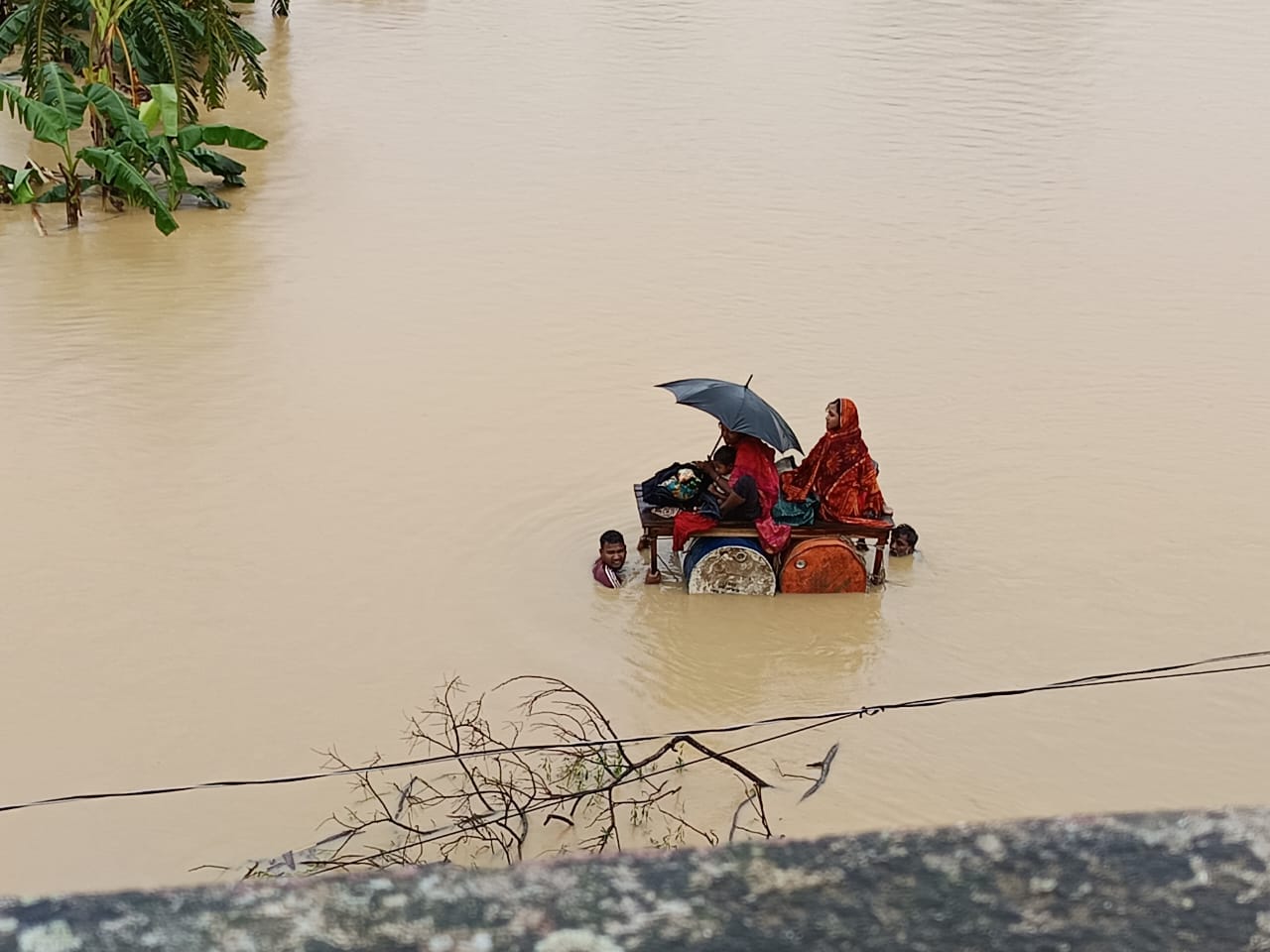

The monsoon season in South Asia caused severe flooding in Bangladesh, India, Thailand, Nepal and Pakistan from May to September 2024.
Flooding events included Severe Cyclonic Storm Remal, which made landfall in Bangladesh on May 26. Heavy rains continued throughout June, July and August. Nepal, India and Bangladesh also experienced flooding at the end of September. In total, several million people have been affected.
According to a 2021 study, global heating is making the South Asian monsoon season more intense and erratic. In 2024, monsoon rains began earlier than usual.
(Photo: Two men guide a cart carrying two women and a child through neck-deep water in Fulgazi, Feni, Bangladesh. Copyright: BRAC/Mozammel Haque)
Key facts
- In Thailand, 57 people died, 28 were injured and another 256,400 people were affected by floods between August and October.
- Rain in mid-August in the state of Tripura, India, resulted in “some of the most severe floods since 1983, according to local media. The rains along with over 2,000 resulting landslides, reportedly affecting 1.7 million people, including around 117,000 who have been displaced to relief camps set up by district authorities.”
- Thame, Nepal, was destroyed in August by a glacier lake outburst flood. The village was home to many of the sherpas who supported trekkers climbing Everest. Part of the Everest trail was also washed away.
- One of the hardest-hit communities in Bangladesh was Cox’s Bazar, home to nearly one million Rohingya refugees from Myanmar, including 800,000 people living in the largest and densest refugee camp in the world, Kutupalong. This population was extremely vulnerable even before the disaster.
- Torrential rain (as much as 12.7 inches in some places) in September caused massive flash flooding in Nepal. Landslides trapped hundreds of people on highways for hours and washed away cars and buses.
Latest Updates
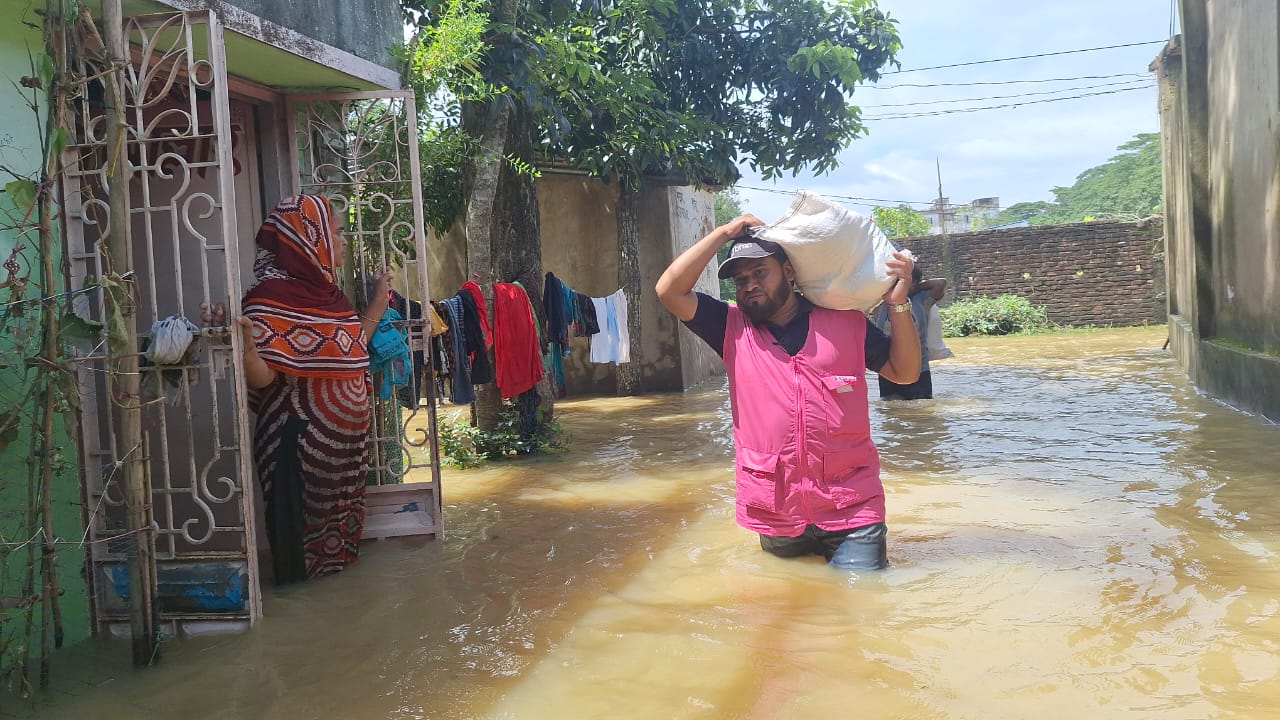
What we’re watching: Weekly disaster update, September 2
Deaths and injuries
From June to August, there were at least 250 deaths in India, 200 in Nepal and 200 in Bangladesh. Save the Children says that half of the 300 deaths in Pakistan were children.
During the Nepal floods in September, at least 228 people died (including at least 35 children). As of Oct. 2, 158 were reported injured, and 25 people were still missing.
Immediately after each flood people needed emergency relief support, including medicine, food, clothing, cattle feed, hygiene and dignity kits, temporary shelter materials and clean water. When the roads flood, they are often impassable due to damage or water, or can only be accessed by small vehicles that cannot hold a lot of supplies.
Livelihoods and agriculture
Many countries in South Asia depend on the seasonal rains for farming and filling their reservoirs and aquifers. In most years, monsoons bring about 70% of the rain India needs for these tasks.
However, storm surge and other types of flooding, combined with drought and extreme heat, have destroyed crops and poisoned farmland.
Additionally, the salination of water due to “floodwater ingress from frequent cyclones” has made drinking water in Bangladesh inaccessible. People have been forced to convert their traditional paddy fields into shrimp ponds because the water is too salty and contaminated to grow rice.
Cash assistance
As with most disasters, experts recommend cash donations, which allow on-the-ground agencies to direct funds to the greatest area of need, support economic recovery and ensure in-kind donation management does not detract from disaster recovery needs.
Many people lost everything in the floods. Direct cash assistance allows families to purchase items and services locally that address their multiple needs. It gives each family flexibility and choice, ensuring that support is relevant and timely. Cash assistance can also help move families faster toward rebuilding their lives.
Protection
After a disaster, the protection of vulnerable individuals (including women, children, older adults and people with disabilities) and ensuring access to basic rights are immediate priorities. Gender-based violence, including sexual assault and trafficking of vulnerable individuals, is often a priority concern. The protection and security of children are also major concerns.
Marginalized people, including refugees, people with disabilities, the elderly, transgender people, women and unaccompanied children, experience greater difficulties in accessing essential aid and services and are vulnerable to abuse, violence and exploitation at points of assistance.
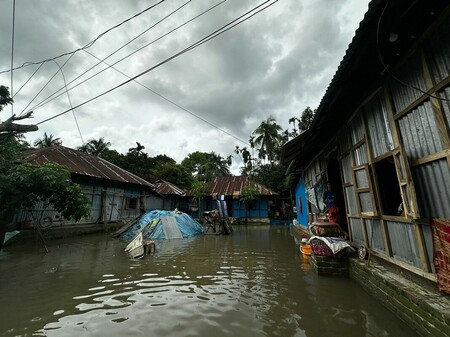
CDP has a Global Recovery Fund that provides an opportunity for donors to meet the ongoing and ever-expanding challenges presented by global crises. Select 2024 South Asia Floods from the dropdown menu.
Contact CDP
Philanthropic contributions
If you have questions about donating to the CDP Global Recovery Fund, need help with your disaster-giving strategy or want to share how you’re responding to this disaster, please contact development.
(Photo: Flooding in Bangladesh, August 2024. Photo credit: CARE)
Recovery updates
If you are a responding NGO, please send updates on how you are working on recovery from this disaster to Tanya Gulliver-Garcia.
We welcome the republication of our content. Please credit the Center for Disaster Philanthropy.
More ways to help
CDP recommends that you ask the experts if you are considering supporting an organization or fund that is positioned to work in an affected area.
- CDP’s team is ready to help you with resources and support on responding to this disaster. You can find a variety of helpful resources on our website or reach out to one of the contacts above for more information. CDP’s grantmaking team can directly fund local and national actors. Our pooled funds also allow for significant impact.
- InterAction can provide resources and guidance about organizations working in affected communities.
- The Council on Foundations provides Country Notes for several countries to help foundations understand giving requirements, laws and regulations in various countries. Country notes for India are available.
Resources
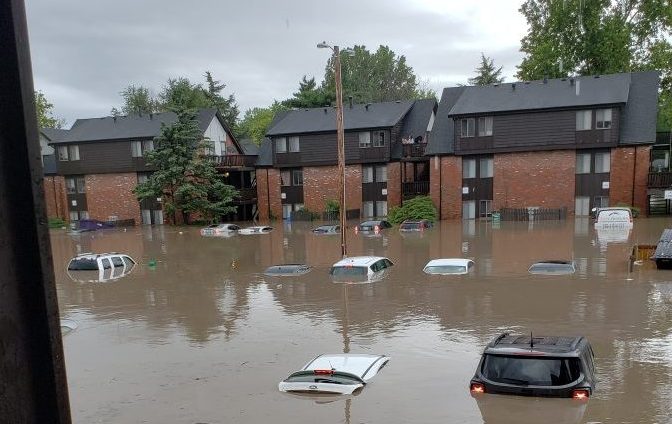
Floods
Flooding is our nation’s most common natural disaster. Regardless of whether a lake, river or ocean is actually in view, everyone is at some risk of flooding. Flash floods, tropical storms, increased urbanization and the failing of infrastructure such as dams and levees all play a part — and cause millions (sometimes billions) of dollars in damage across the U.S. each year.
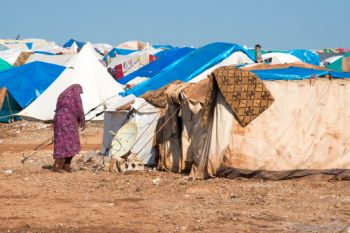
Emergency and Interim Shelter
After a disaster, shelter is more than a place to rest, it is a place of security, access to food, water and medical treatment. A place to start recovering after a disaster.

Monsoon Seasons
While often thought of as long-term heavy rain over a specific area, a monsoon is actually the name for a seasonal change in the direction of the prevailing winds. It can bring either extremely wet or extremely dry weather to an area.